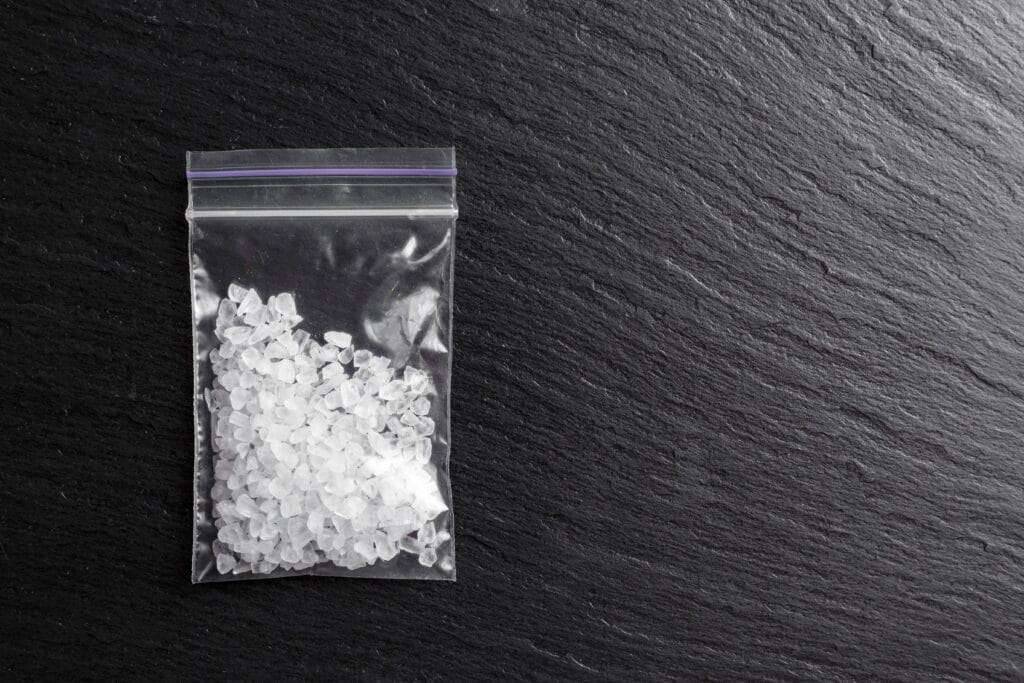Methamphetamine, also known as meth, is notorious for being one of the most addictive substances. It’s not just another street drug. Meth has a reputation for hooking people quickly and holding onto them with a tight grip.
So, what is it about meth that makes it so dangerous and addictive? Did you know that trying meth just once can set off a chain reaction in the brain, making it almost impossible to resist the urge to use it again?
We’ll dive into the key reasons meth is so addictive. We’ll explore how it affects the brain, why people quickly develop a dependency, and the challenges of breaking free from its grasp.
Whether you’re curious about the science behind meth addiction or you’re seeking to understand the struggle of a loved one, we’ll shed light on why meth is so hard to quit.
What Is Meth?
Methamphetamine is a stimulant affecting the central nervous system with chemical similarities to amphetamine. Amphetamine is used for conditions like ADHD and narcolepsy, but methamphetamine has much stronger effects.
The rapid high of meth contributes to its addictive nature.
Illegal meth is made in labs with toxic chemicals, so it’s extremely dangerous not only because of the addictive potential but also the harmful substances used to make it.
How Meth Affects the Brain
One of the reasons meth is so addictive lies in how it dramatically changes brain chemistry. When someone uses meth, it triggers an enormous release of dopamine, playing a role in how we experience pleasure, motivation and reward.
Under normal circumstances, dopamine is released in small amounts in response to activities like spending time with loved ones or eating, creating happiness and satisfaction.
However, meth creates a dopamine surge that’s far beyond what the brain naturally produces. The overwhelming dopamine flood creates an intense rush of euphoria that users often say is unlike anything they’ve felt before. It’s this powerful, all-consuming high that can make meth so appealing and ultimately so addictive.
Here’s where it can get even more dangerous—meth doesn’t just provide a one-time high. It hijacks the brain’s reward system. The brain is naturally wired to want to repeat activities that lead to pleasure, so we crave things that make us feel good. Meth takes advantage of this system by creating an artificial sense of reward that’s so strong the brain prioritizes meth over everything else.
Over time, the brain starts depending on meth to release dopamine leading to cravings that are difficult, if not nearly impossible, to resist. Dependence makes meth addiction powerful, and why people find themselves trapped in a cycle of repeated use, constantly chasing the first euphoric high.
As meth takes over the brain’s reward system, breaking free from its grip becomes an uphill battle and makes recovery a challenging process.
Tolerance and Dependence
As meth use continues, the brain adapts to the drug’s presence, leading to what’s known as tolerance.
When someone first uses meth, the initial dopamine rush creates an overwhelming sense of euphoria. However, as the brain is repeatedly flooded with dopamine, it adjusts by reducing its sensitivity to the drug.
The result is that, over time, the same amount of meth no longer produces the same intense high.
Someone may find they’re taking larger and more frequent doses, which is the cycle of building tolerance.
This all accelerates the risk of addiction.
The brain starts developing a physical dependence on meth as tolerance builds. Normally, the brain regulates dopamine levels for balance and proper functioning, but with meth use, the natural dopamine production of the brain gets disrupted. Eventually, the brain is so used to the presence of meth that it struggles to produce dopamine on its own.
The reliance on meth to keep up normal dopamine levels creates a situation where the person using it may feel unable to function without it.
If someone’s dependent on meth and tries to stop using it, they can experience intense withdrawal symptoms. These symptoms are the response of the brain to the sudden drop in dopamine levels and its attempt to readjust to functioning without meth.
Physical dependence makes it incredibly hard to quit because the body and mind encourage the person to seek more meth to feel normal again.
The combination of tolerance and dependence is what makes meth so difficult to quit. It becomes a vicious cycle, pushing users to take more meth while simultaneously making it increasingly hard to stop.
The Psychological Grip
One of the most powerful aspects of meth addiction is its psychological grip. The cravings can become so intense they dominate a person’s thoughts and actions, so focusing on anything else is almost impossible.
The cravings aren’t just a fleeting desire. They’re a relentless drive to use the drug again, fueled by the brain’s constant demand for more dopamine. This leads to a single-minded obsession where using meth becomes a top priority at the expense of everything else in a person’s life.
Meth can trigger significant behavioral changes as cravings take hold. These can include risky, dangerous or out-of-character behaviors in pursuit of the drug.
The impact of meth on the brain can lead to impulsive decisions, poor judgment and a willingness to take extreme risks to satisfy the craving.
Meth can also create a strong emotional dependence. It can be a way to escape or cope with negative emotions. The intense euphoria of meth is a temporary relief from the challenges of life, but the reliance on meth to manage feelings only deepens the addiction. It becomes a crutch to deal with everyday life.
Emotional dependency can be especially hard to break. It intertwines the drug with the person’s mental and emotional well-being.
Overcoming meth addiction isn’t just about resisting physical cravings. It also involves untangling the deep psychological ties that meth has formed, making the road to recovery feel overwhelming.
Break Free from Meth Addiction—Start Your Recovery Journey Today at San Diego Detox
If you or someone you care about is feeling trapped by the powerful hold of meth addiction, know that lasting recovery is possible—and it starts with the right support. At San Diego Detox, we offer a compassionate, medically supervised environment designed to help you safely detox, heal, and rebuild. Our individualized treatment plans address both the physical dependency and the deep emotional struggles tied to meth use. Don’t face this journey alone. Reach out to us today and take the first step toward reclaiming your life.







